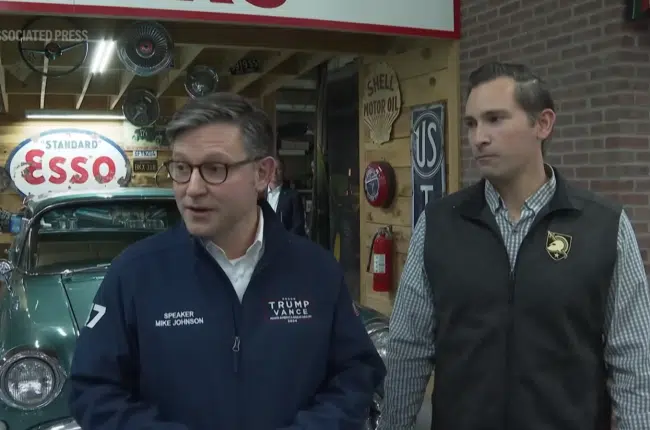
In 2020, the urban rural divide became increasingly apparent in national politics, with President Donald Trump and conservatives sweeping rural regions while Democrats largely dominated in cities and suburbs.
This election year however, Trump’s strong inroads with traditionally Democratic groups, including Hispanics, Black voters, and young people, translated to an increase in support in the suburbs, and no loss among urban voters compared to 2020. In fact, Trump significantly improved on his margins in certain metro areas, like New York City and Detroit. Trump also won a plurality of white suburban men and women this year.
Nationwide, Trump upped his share of the suburban vote by three points compared to 2020, enough to flip the suburbs into his win column. Trump earned 51 percent of suburban voters this year to Harris’ 47 percent, but lost suburbanites to Biden 50 percent to 48 percent four years ago.
While Trump’s share of the urban vote remained the same this year as it did in 2020, a string of gains in metro areas hint at future opportunities for conservatives in cities that have faced economic hardship and rising crime.
In states with sprawling suburban populations, Trump’s share of the suburban vote rose substantially. In Florida for example, Trump won suburbanites by 28 points this year, 61 percent to 38 percent, after winning them by eleven points in 2020.
In Miami-Dade County, Trump won the county by 12 points this year and became the first Republican to win the densely populated region for the first time in 36 years. Miami-Dade is a sprawling county that includes vast Cuban and Venezuelan populations, groups Trump upped his margins with substantially.
Nationwide Trump gained fourteen points with Latinos, going from 32 percent in 2020 to 46 percent on November 5th, but in Florida he outright flipped the Latino vote into the Republican column. Trump won Latinos by 16 points this year in Florida, 58 percent to 42 percent, after losing them to Biden by seven points in 2020, 53 percent to 46 percent. Trump’s twelve-point shift among Latinos in Florida moved them into the Republican column and gave him a comfortable lead.
In Virginia, movement toward conservatives in populous suburban regions helped shave off around five points from Harris’ win in the state compared to Biden’s win four years ago, inviting speculation that Virginia may be back in the swing state column within a few election cycles. Virginia’s Loudoun County, a well-populated suburban county that includes a significant Asian American presence, shifted nine points toward Trump this year compared to four years ago.
The same county began showing signs of shifting toward the right in the 2021 Governor’s race, when Gov. Glenn Youngkin won the Governor’s mansion for Republicans with the help of suburban voters.
Elsewhere, Republicans made inroads even in the most unlikely places, including a 3.4 percentage point gain in Wayne County, Michigan, which includes the sprawling and diverse city of Detroit.
One reason for Trump’s increase in Detroit can be attributed to Black men. Trump gained three points with Black men in Michigan this year, going from eleven percent of their vote in 2020 to thirteen percent this year.
Trump even gained in New York City, eating into Democrat gains substantially compared to four years ago. Harris still won deep-blue New York City by a 38-point margin, 68 percent to 30 percent, but that was significantly down from Biden’s 53-point margin four years ago. In pure numbers Harris secured 600,000 less votes than Biden did four years ago in New York City, while Trump earned close to 100,000 more votes this year.
One of Trump’s largest gains in the city was in The Bronx. The Bronx saw an eleven-point shift toward Trump, from 16 percent in 2020 to 27 percent this year, according to data from CBS news.
Trump’s gains in urban and suburban areas appear to be tied to his gains with minority populations, but there is evidence that he performed well with suburban whites as well. Trump won suburban white men by 27 points, and he won suburban white women by seven points.
Try as they might, Democrats were unable to successfully vilify Trump and his America First message, and that message appealed broadly to metro and suburban voters, although it was even more warmly embraced in rural areas and small towns. The rural-urban divide remains strong, but it is less strong than it was four years ago. Instead, class remains an important dividing variable, with lower income Americans continuing to align with Trump’s America First message regardless of where they live.
Manzanita Miller is the senior political analyst at Americans for Limited Government Foundation.






